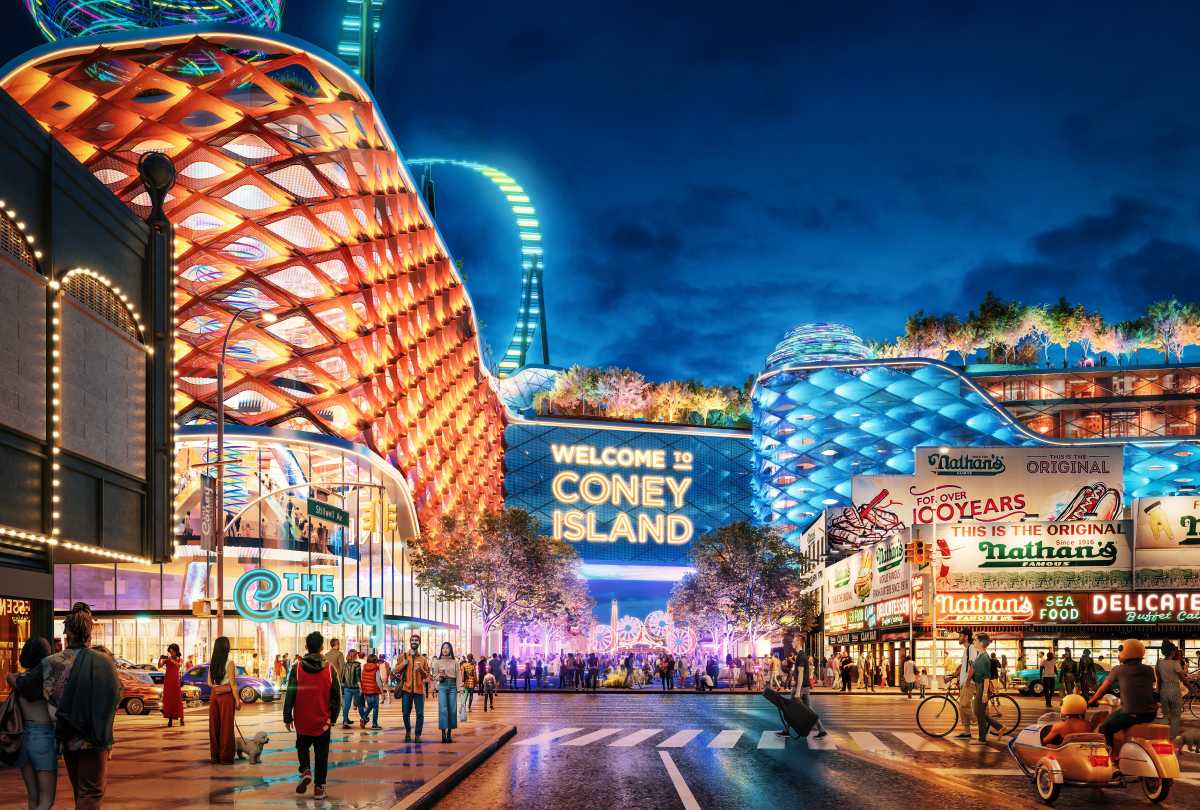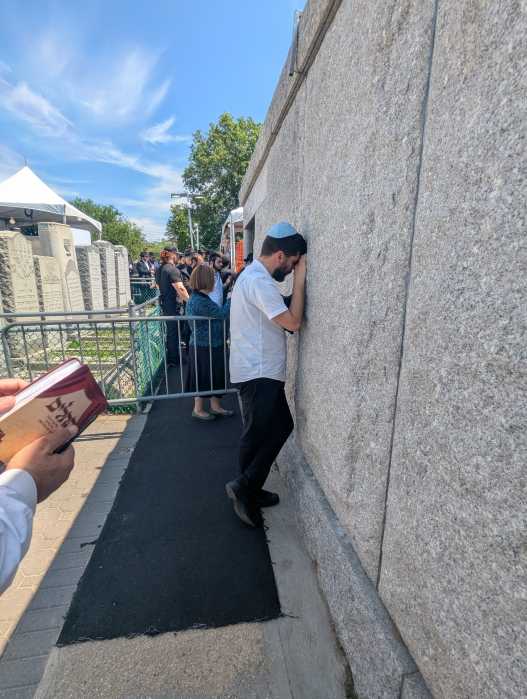By Josh Rogers
Downtown can count the last time it saw a new train service in terms of decades, nearly $3 billion has already been allocated in post-9/11 transportation projects and there is no definite plan to bring any new rail service to Lower Manhattan – at least not yet. State and city officials released four ways to build a link to the Long Island Rail Road and J.F.K. Airport on Wednesday and say they will come up with a plan and a way to pay for it by this April.
Two of the options have been under consideration for over a year — building a new tunnel from Downtown to Brooklyn’s L.I.R.R. Atlantic Terminal stop or running the train through the existing Cranberry A,C subway tunnel — and two are new — using the Montague M,R subway tunnel or using both the Cranberry and Montague tunnels for subways and suburban commuters.
All of the options would use the new J.F.K. AirTrain tunnel either via Jamaica or perhaps through Howard Beach.
It would be the “first new train to Downtown in more than 50 years,” said Daniel Doctoroff, deputy mayor of economic development and rebuilding. “This will become as much a part of Downtown’s fabric as the subway, the Staten Island Ferry or the Brooklyn Bridge.”
It was actually about 70 years ago when the A,C was built Downtown and the trains’ tunnel might provide the route for the new link.
“In terms of really changing the character of Lower Manhattan, this is absolutely critical,” Doctoroff added at a press conference at Lower Manhattan Development Corp. offices Feb. 4.
The goal is to make Downtown an attractive place for firms that do lots of international business or have many Long Island employees. Previously city officials estimated that travelers could get from Lower Manhattan to J.F.K. in less than 30 minutes with a new link.
The price range on the options likely begins in the $2 billion neighborhood and may stretch to three if not four times that. Many details about the plans have not been disclosed, at least in part because they are being studied now. Officials and consultants with the state, city, L.M.D.C., Metropolitan Transportation Authority and the Port Authority refused to state previously accepted dogma about the airport-Long Island link — namely that constructing a new tunnel through the East River would be the most expensive option.
Mayor Mike Bloomberg, in a speech outlining a long-term vision for Downtown back in December of 2002, put forward the new tunnel idea and made it clear that he thought it would be the most expensive option – at a cost of at least $4 billion.
At the time, Bloomberg suggested that if the money could not be found for a new tunnel, the Cranberry option was probably the next best thing. Cranberry was first proposed by Brookfield Properties, owners of the World Financial Center in Battery Park City. Consultants to Brookfield, Downtown’s largest property owner, estimated the Cranberry plan could be done for $2 billion. The main criticism against this plan was that it would require the C train to move from the Cranberry to the underutilized F train or Rutgers tunnel. Brookfield argued it would not be a reduction of subway rider service because they proposed that the suburban link be the same price as the subway, but many transit advocates were skeptical.
Officials are now excited about the new Montague option because they think with the N-train slated to leave Montague this month to go to refurbished Manhattan Bridge subway tracks, it could be a not-too-expensive way to build the link without reducing subway service.
The Montague plan also has the advantage of being able to make several stops in Lower Manhattan along the J,M,Z route – at Broad, Fulton and Chambers Sts.
While they are studying the costs and benefits of the plans, officials are looking for ways to pay for one. The L.M.D.C. has roughly $1.5 billion left in 9/11 –related transportation money and $1 billion in other monies but various interests are fighting to use that money on a large number of other projects. The Port Authority has committed to spend $500 million on the J.F.K. link if it proceeds.
Gov. George Pataki, who is committed to building one of the four options and has close ties to the White House, said several months ago that he thought there was a good chance that President Bush would increase the amount of aid to Lower Manhattan beyond the original $21.4 billion package.
Peter Kalikow, M.T.A. chairperson, said on Wednesday at the J.F.K.-L.I.R.R. press conference, that his agency plans to spend a lot of money on Downtown in its 2005-2009 capital budget.
“We will in the ’05-’09 make a considerable contribution to that,” Kalikow said.
Gene Russianoff, an attorney with the Straphangers Campaign, a subway riders’ advocacy group, said that was one of the most troubling statements that he heard was said at the press conference.
“It was a surprise,” Russianoff said of Kalikow’s pledge. “He doesn’t have the dough.”
If the link were built with 9/11 money, Russianoff would have fewer concerns.
He said the M.T.A. had to borrow most of the money for the $19.1 billion 2000-2004 capital budget and the M.T.A. has not found a way to pay for vital projects such as the Second Ave. Subway, which is scheduled to begin construction at the end of the year.
He said the airport-commuter link has lots of unanswered questions, such as how many people will use the service, the costs and the benefits, particularly compared to Second Ave. “We are not opposing it, we are just saying that there are a couple of hurdles they face which are serious,” he said.
He thinks officials may be overly optimistic that a large number of Long Island commuters would switch trains at Jamaica when they could just continue on to Penn Station and catch a Downtown subway there. “My lifelong experience is I stay on a moving train,” said Russianoff.
Nick LaRocca of Parsons Systra, which was hired by the L.M.D.C. as a consultant to the project said that it may be possible to shave 15 minutes off the Long Island commute to Downtown with some of the new options.
Jeffrey Zupan, a transportation analyst with the Regional Plan Association, said of the 15-minute estimate, “I find that very difficult to believe because you’re going to have to transfer at Jamaica.”
He shares Russianoff’s concerns about the link. He did think the Montague plan had more potential than the Cranberry or Brookfield plan because it has more stops Downtown.
John Zuccotti, Brookfield’s chairperson, attended the presentation on Wednesday, but left before speaking to reporters. His spokesperson, Lloyd Kaplan, said later that Brookfield was happy that four good plans are being considered and that executives are happy that a decision will be made quickly.
“We’re delighted with the whole thing,” said Kaplan. “There is no contest as to which one we’re supporting… The process they have set up makes enormous sense. We are looking to see which one of the four they think is best.”
All four options would provide a one-seat ride to the airport and would either stop in the proposed Fulton Transit Center or near the World Trade Center hub. There would be underground connections to both hubs and the airport platform under each plan.
The new tunnel option would provide the most flexibility as to where in Lower Manhattan the trains could stop.
The combination Montague-Cranberry option would be given stronger consideration if the Montague plan ends up being more disruptive to subway service than expected. Under the combination plan, the airport train would likely run in the A,C tunnel since it would be less frequent than the L.I.R.R. The airport train would pull into tracks built under the Fulton Transit Center, and the L.I.R.R. would run through the Montague tunnel making stops at Broad, Fulton and Chambers Sts.
Madelyn Wils, chairperson of the L.M.D.C.’s transportation advisory committee, said in a world where costs were not a consideration, the new tunnel option would be the best since it would not affect subway service and would likely be the easiest route. She said it remains to be seen what the best plan is when costs are factored in and whether it would be better to connect the link to the W.T.C. or to the Fulton Transit Center.
“I’m not sure that whether it is under Cortlandt, Fulton or the Word Trade Center [hub], it is going to be that different,” she said.
A new type of hybrid train suitable for subway and commuter lines would also have to be designed for the link. LaRocca, the L.M.D.C.’s consultant, said “from an engineering perspective it is doable.”
Stefan Pryor, the L.M.D.C.’s chief of staff, said that there are examples of hybrid-type trains that can be used as a springboard to a J.F.K.-link. He said currently, the L.I.R.R. uses double-decker trains with electric and diesel prpopulsion engines. The San Francisco Muni trains used to have trains that operated with two types of signaling systems, Pryor said.
The R.P.A.’s Zupan agreed that hybrid trains are feasible, but he thinks the idea may have a political problem. If you run an elite-type of service on subway lines, the tendency would be to charge commuter prices, which would exclude low-income subway riders.
Josh@DowntownExpress.com
Reader Services



























